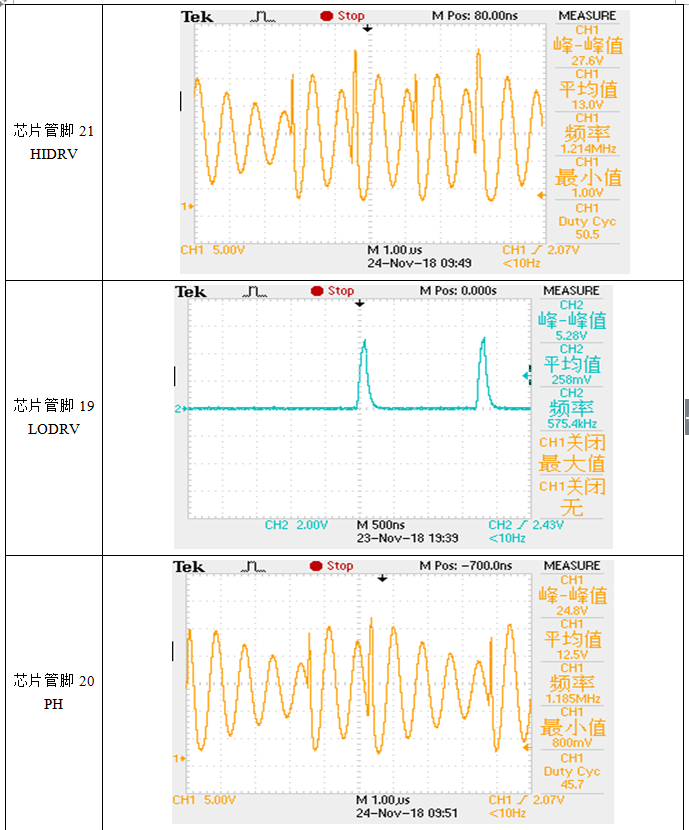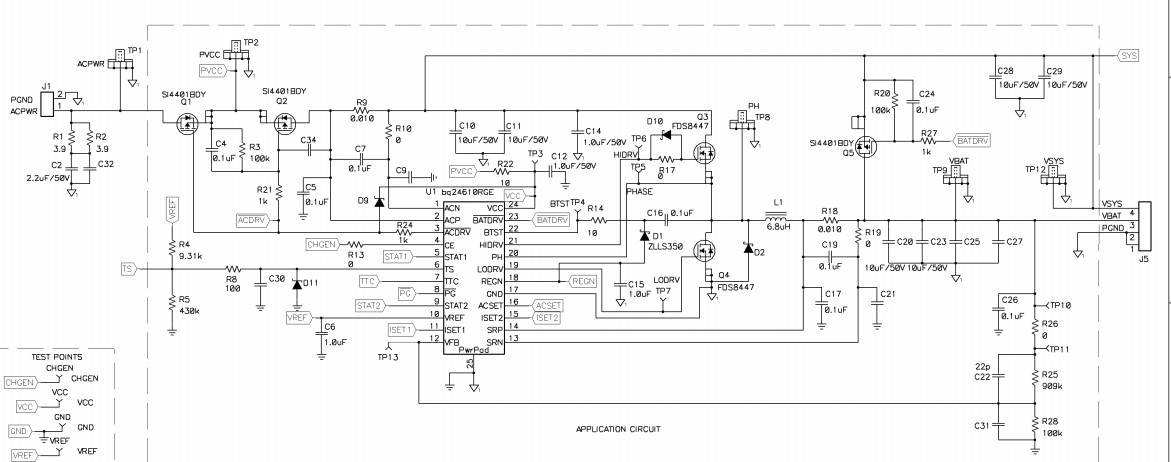Hello,
my project is used in DC input 15V, charging is full of 12.6V charging circuit, I have two doubts, the first when I am empty, my two different items of boards HIDRV and LODRV and PH feet The switching frequency is different. The following is the waveform intercepted by the oscilloscope in my test. The second doubt is that the battery voltage I set is 12.6V, but the battery voltage I am full is 12.5. I have read the specifications and specifications of BQ24610. The 0.5% of the scale is a bit wrong. Can you give me the answer?





